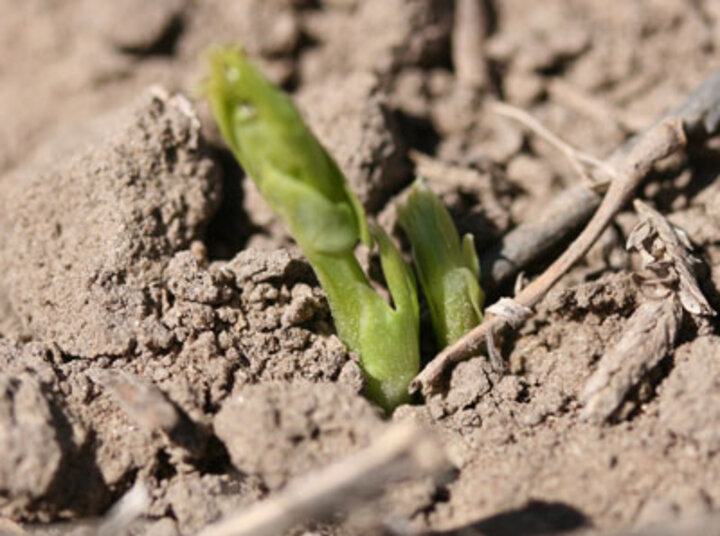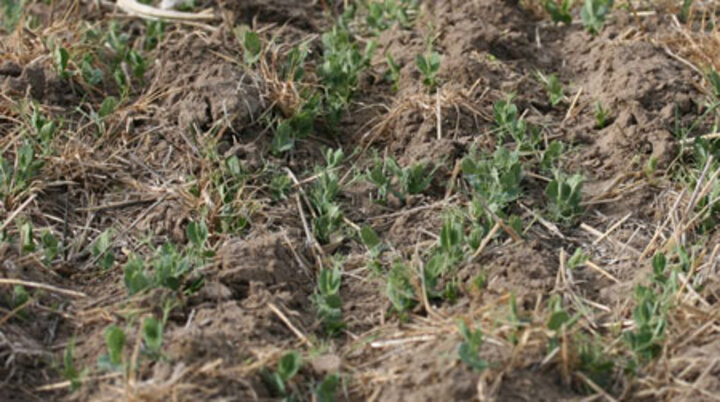Dry edible field pea (Pisum sativum) is a high-protein legume being planted in western Nebraska dry land and irrigated cropping systems as an alternative crop.

Figure 1. Newly emerged dry edible pea, Box Butte County, April 25, 2014.

Figure 2. Young dry edible pea, Scotts Bluff County, April 25, 2014.
A relatively new crop in the Panhandle, these field peas are being marketed primarily for human consumption but also can be used for pet food and livestock feed. A 25-30 bu/ac pea crop can be produced with 9 to 10 inches of water, which is important in western regions that face low rainfall and increasing restrictions on irrigation.
Field peas previously had been grown in western Nebraska on a small scale and processed out of state for cover crops and livestock feed. Growers now contract with Stateline Producers Cooperative in Gering which has segregated handling and storage facilities, allowing for field peas to be grown regionally for a larger overseas market for human consumption.
In 2013 about 25,000 acres of yellow edible field peas were harvested in western Nebraska, Colorado, South Dakota, Wyoming, and Kansas. Dry land yields in the northern Panhandle averaged 35-40 bu/ac while yields in the southern Panhandle and southwest Nebraska averaged 15-25 bu/ac due to drier conditions. The irrigated pea crop had yields ranging from 30 to 65 bu/ac, according to Courtney Schuler of Stateline Producers Co-op.
Growers were generally encouraged with the crop and ready to try it again in 2014. Seventy to eighty percent of the peas will go overseas in export markets and as food aid. The remaining crop will be sold domestically as a source of protein in food and supplement markets and in the pet food market. Some peas are used in livestock feed rations as well. Schuler said Stateline has ordered two pea splitters that they expect to be operational for the 2014 harvest. Splitting will add value to the crop for the growers and provide more marketing opportunities for the end product.
It's estimated that 40,000-50,000 acres in the five-state region were planted to dry edible field peas this spring. Planting started in late March and by the third week of April 85% of the crop had been planted and 10-15% had emerged. Most of the peas will be in the ground by May 1. Snows and rains this spring in much of western Nebraska have resulted in good soil moisture conditions. With more moisture in the forecast, we are hoping for a good dry edible pea crop in the 2014 growing season.
John Thomas
Extension Educator, Box Butte County
5/1/14
